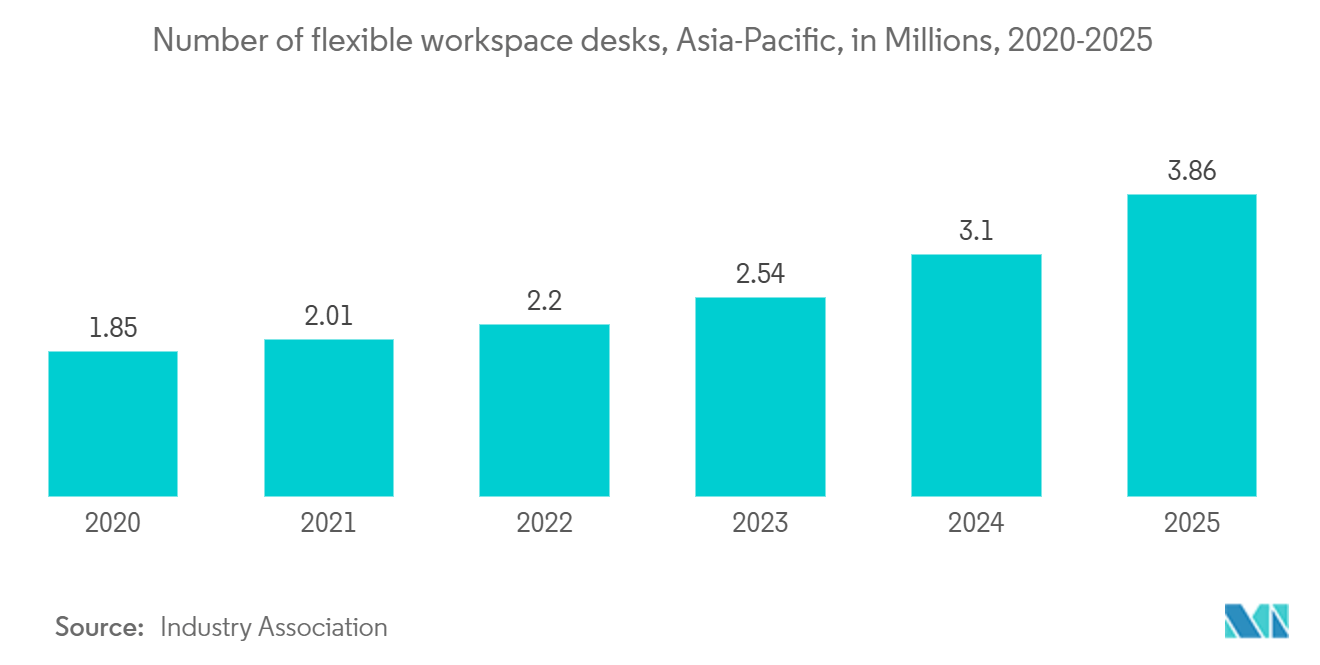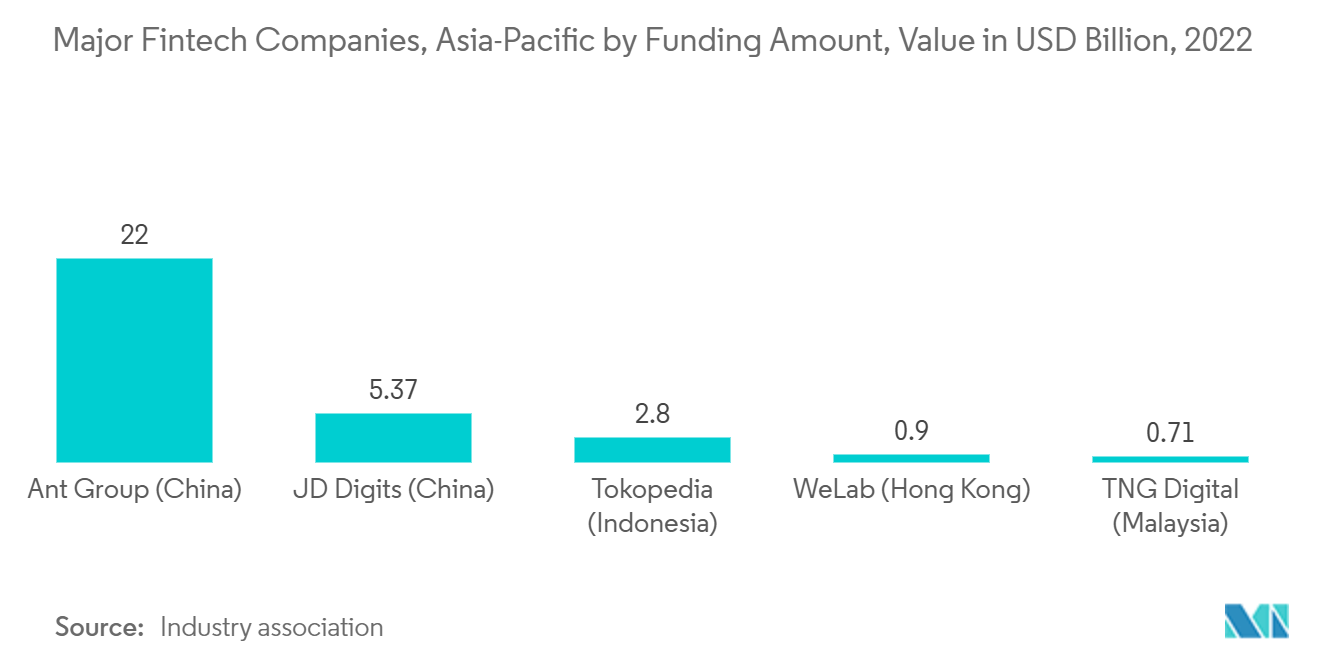Market Trends of ASEAN Office Real Estate Industry
Demand for Co-Working Spaces is Driving the Market
- Co-working and flexible spaces are valuable resources for businesses operating in Asia. The demand for flexible office spaces is increasing more quickly in ASEAN countries than anywhere else in the world. In three years, the number of major flexible space operators has doubled, and flexible floor space has expanded by 150%. Co-working spaces are expected to account for about 15% of the entire office supply in Southeast Asia in the next decade.
- In ASEAN, with the end of the traditional lease, many companies are recognizing the need to adjust their real estate strategies. Companies are opting to downsize their office spaces in favor of more flexible and dynamic workspace setups. Many jobs no longer require employees to work in conventional offices as a result of the growth in digital connectivity. A global market reach without having to pay for many offices is also something that companies require.
- This led to the development of the co-working phenomenon, which involves independent professionals, such as freelancers and project-based workers, working together in a shared workspace. Companies that support flexible work schedules have started putting their remote workers in these settings.
- With the decentralization of the office, businesses got access to an endless talent pool. Employing borderless hiring allows businesses to find the best personnel and place them in the co-working spaces that are closest to them. Companies in Malaysia, Indonesia, and Singapore that face growing talent scarcity and a skills mismatch stand to benefit significantly from talent becoming the new oil. Increased variety results from utilizing a larger talent pool since stay-at-home parents, people with disabilities, older people, and students would be able to offer their expert skill sets to the economy.

Rise in Start-ups Driving the Market
- Local venture capitalists are actively looking for new growth areas as the US market becomes more expensive and the prices become less correlated to fundamentals. Many organizations are keeping an eye on the nations of Southeast Asia. With a concentration on Vietnam, Thailand, Indonesia, Malaysia, Singapore, and the Philippines, Southeast Asia is a broad but very powerful prospective market.
- Over the past few years, the region's digital and tech businesses have experienced a tremendous boom. According to Jungle Ventures, the aggregate valuation of Southeast Asia's technology start-ups was USD 340 billion in 2020; the figure is expected to triple by 2025. Although each of the nations is at a distinct stage of development, they all provide a wide range of prospects for the establishment of cutting-edge technologies and tried-and-true business models.
- Tech start-ups play a significant role in driving the demand for leased office space in the region, and they are expected to contribute to about 20-25% of the demand over the next five years. Among the countries in the region, Singapore stands as one of the top five tech hubs, providing the necessary infrastructure and talent for businesses. It is well-positioned to offer future growth and investment opportunities for property owners.
- A strong foundation for innovation provides new start-ups with a big boost. Government policies encourage the growth of new digital businesses, which is another significant component. Under the Thailand 4.0 program, Thailand provides tech companies with one such program that includes visa and tax advantages. Grab, the "Uber-killer" of Southeast Asia launched in 2012, has since provided financial services, food delivery, rides, and hotel reservations. It forced Uber to leave Southeast Asia in 2018.
- Shopee is a global technology corporation with headquarters in Singapore. The site first functioned as a marketplace connecting consumers. The platform had 200 million downloads as of 2019. With 343 million monthly visits as of 2021, it was regarded as Southeast Asia's largest e-commerce platform. In addition to these, other firms are developing in the area, receiving funding, and succeeding. According to Cento Ventures, venture capitalists invested in 393 businesses in Southeast Asia in the first six months of 2021.
- While technology companies continue to reduce their workforce, financial and professional services firms are compensating for this by increasing their leasing activity. Compared to other regions, Asia-Pacific markets showed better office utilization rates, and demand remained relatively strong due to a preference for high-quality office spaces. As the region's development cycle is expected to continue in the coming years, occupiers will have more options available, giving them negotiating power to secure favorable leasing terms. This trend is expected to further widen the gap between top-quality and lower-rated office assets.


